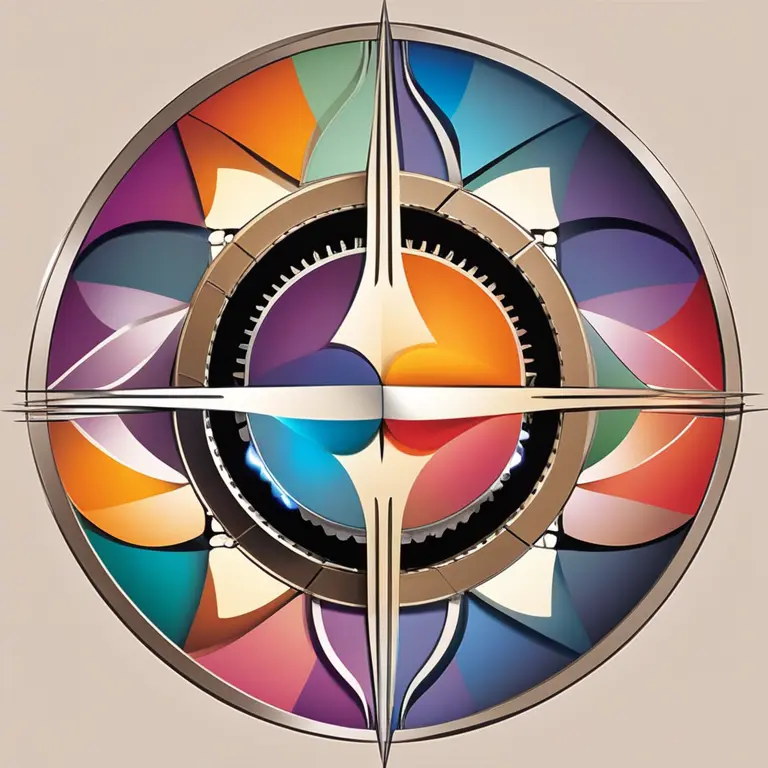
The Concept of Life: A Guide to Biorhythm Cycles
Delve into the concept of biorhythm cycles and learn how they may influence your daily life, emotions, and physical well-being.
article by Adrian Wallace
A Glimpse into Biorhythm Cycles
What are biorhythm cycles? These are theoretical cycles that purportedly affect various aspects of human life, namely physical, emotional, and intellectual states. The concept finds its origins in the 19th century and posits that from birth, each person embarks on three distinct sine wave cycles that oscillate between high and low phases. The physical cycle spans 23 days, the emotional one takes 28 days, mirroring the lunar cycle, and the intellectual cycle completes its loop in 33 days. Understanding these cycles is thought to help individuals gauge their capabilities and moods on any given day.

The Physical Cycle
The physical biorhythm cycle is one of the key components in biorhythm theory. It's believed to influence our energy levels, strength, and overall health. During the positive phase of approximately 11.5 days, an individual might feel at the peak of their physical capabilities, whereas during the negative phase, the same individual could experience lower energy levels and should therefore take care not to overexert themselves. With the current trends towards holistic wellness in 2024, many individuals turn to these cycles in an effort to optimize their physical activities and recovery periods.

The Emotional Cycle
The second cycle, the emotional biorhythm, is purported to affect mood, creativity, and sensitivity. This 28-day cycle mirrors the emotional ebb and flow that many may experience. Advocates for biorhythm study suggest that understanding one's own emotional cycle can enhance interpersonal relationships and emotional well-being. They argue that by predicting 'highs' and 'lows,' individuals can better prepare for emotionally demanding situations or take advantage of the days when their emotional cycle is at its peak.

The Intellectual Cycle
Rounding out the trio is the intellectual biorhythm cycle, lasting 33 days, which is said to influence cognitive functions, decision-making, and reasoning. Those in the know claim that during its positive phase, mental acuity is heightened, making it an optimal time for problem-solving and learning new skills. Conversely, when this cycle dips, one might find it beneficial to perform routine tasks and avoid making significant decisions. This aspect of biorhythm cycles is particularly appealing to knowledge workers and students aiming to boost productivity and learning outcomes.

Interpreting Your Biorhythms
Interpreting these cycles requires calculating the days since birth and plotting them onto the biorhythmic graph. Numerous online tools and software have emerged, offering personalized biorhythm charts. While these cycles have not been scientifically validated, many individuals find value in the rhythm analysis, paralleling popular mindfulness practices that encourage attunement with one's internal states. As an integrative practice, biorhythm analysis can complement other self-awareness methods.
Biorhythms in Modern Times
As we advance technologically, the appeal of biorhythms maintains a fascinating foothold in contemporary culture, particularly among those intrigued by life's synchronicities. With the wellness industry expected to be increasingly driven by personalized health data, the integration of biorhythm tracking into wearable tech is conceivable, offering users daily insights into their perceived cycle-driven capabilities and potential.
Published: 1/25/2024
Modified: 1/25/2024
More predictions
Come back here soon to learn more about yourself and your future


The Basis of Biorhythms: An Insight into Biological Cycles
Delve into the concept of biorhythms, the belief in rhythmic biological processes that purportedly influence human physiology and behavior.


The Intersection of Biorhythms & Astrology Explored
Discover the link between biorhythms and astrology to gain insights into your life's patterns and potential.


The Biorhythm Debate: Effective Insight or Myth?
Discover the realities behind biorhythms, how they're calculated, and their impact on daily life. Can these biological cycles truly predict our physical, emotional, and intellectual states?